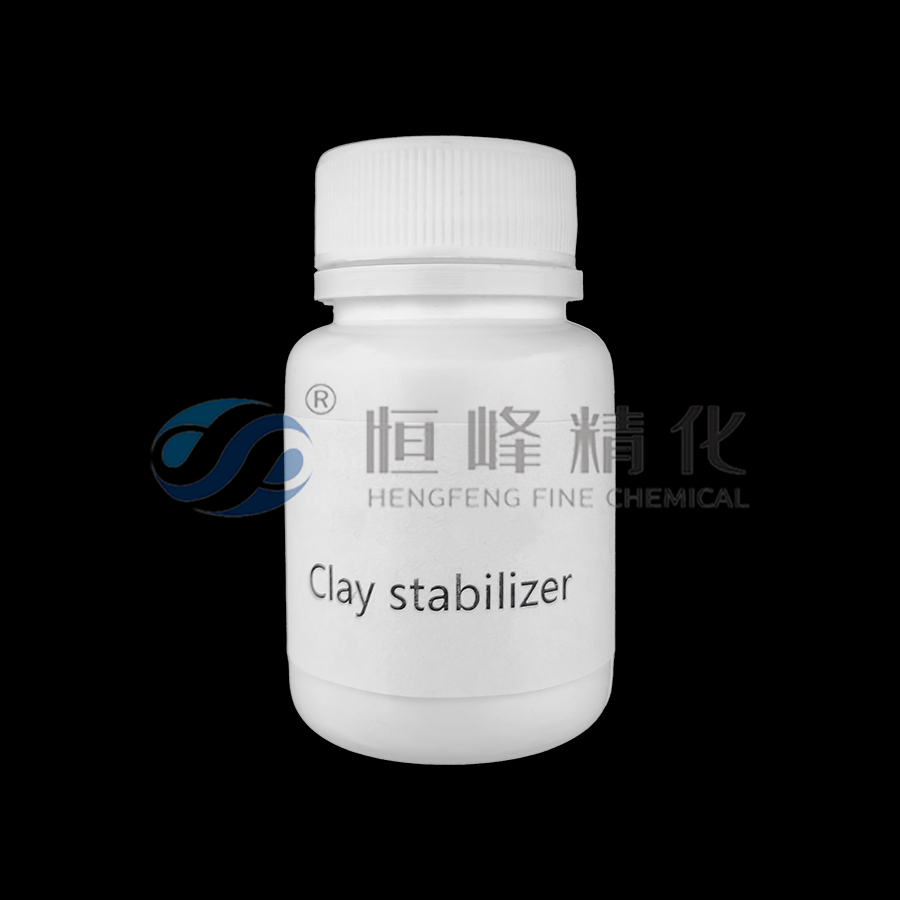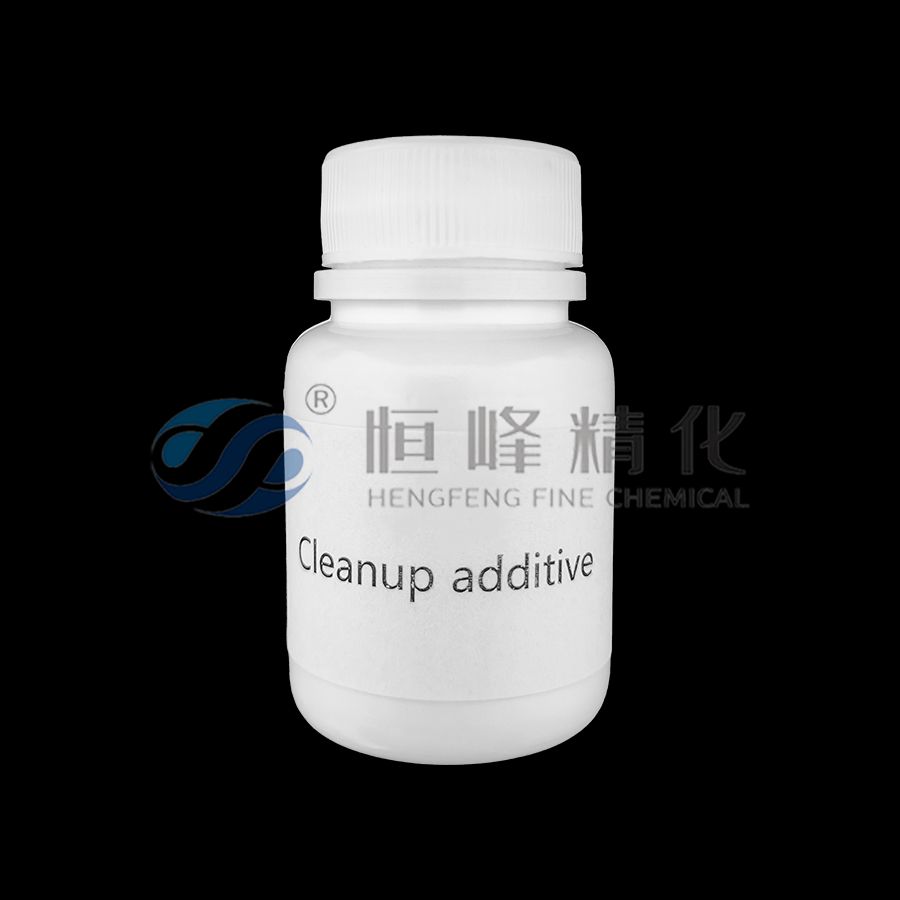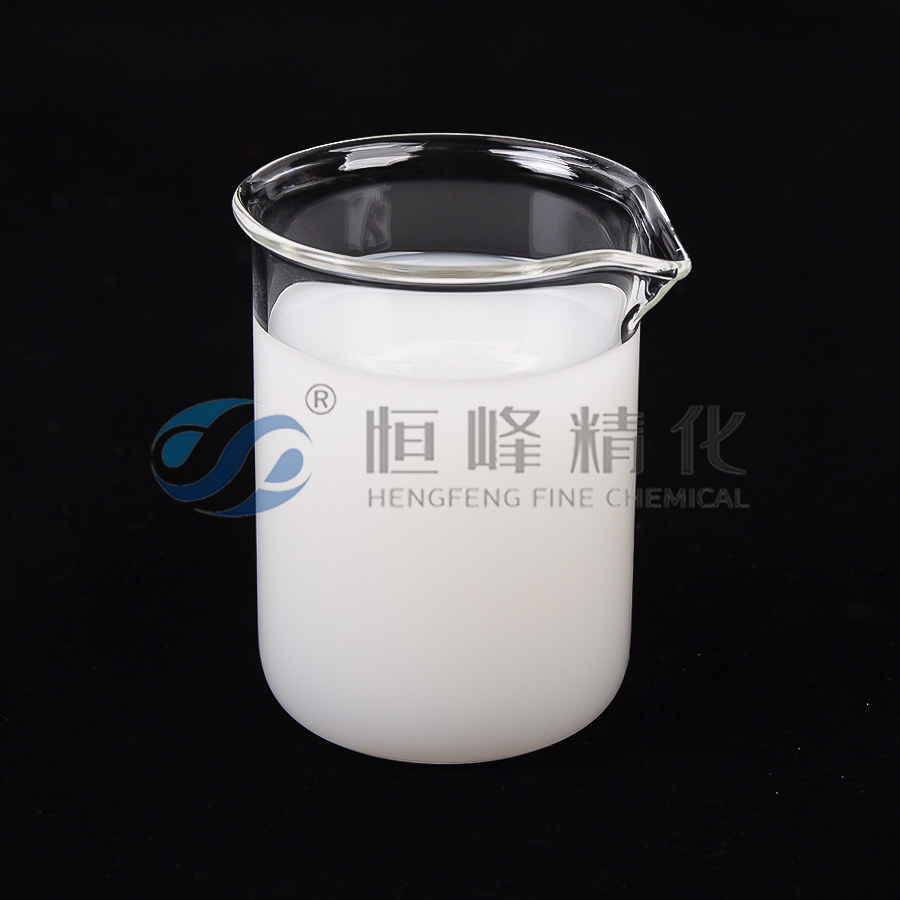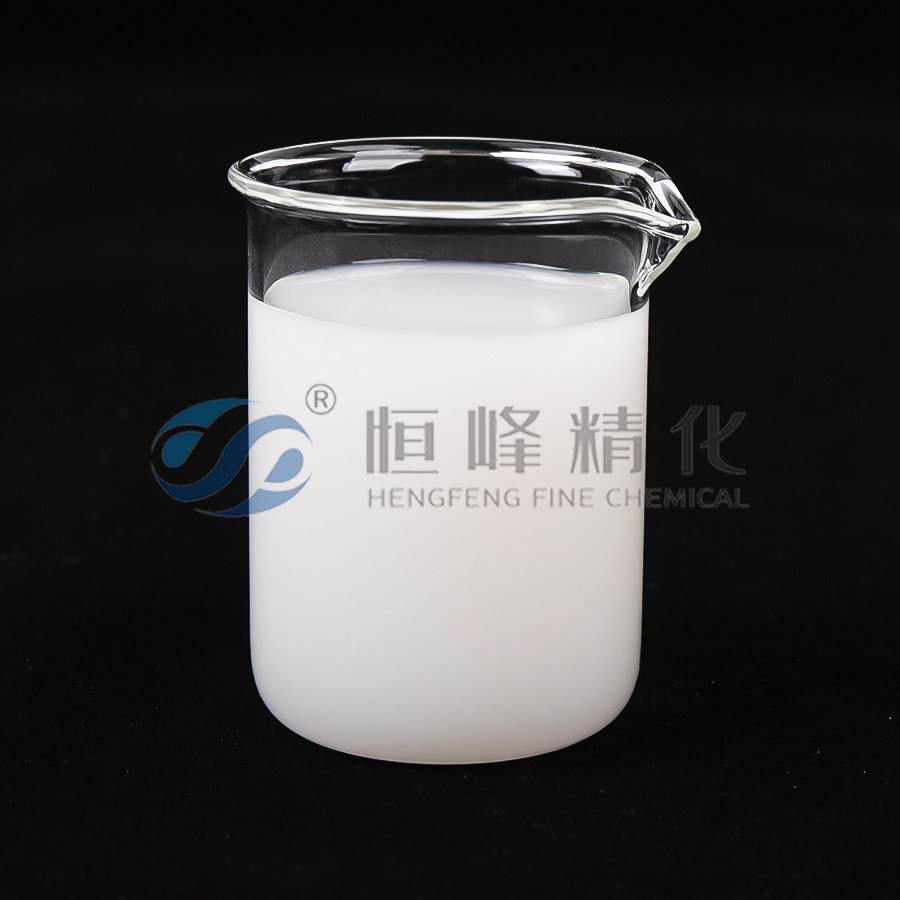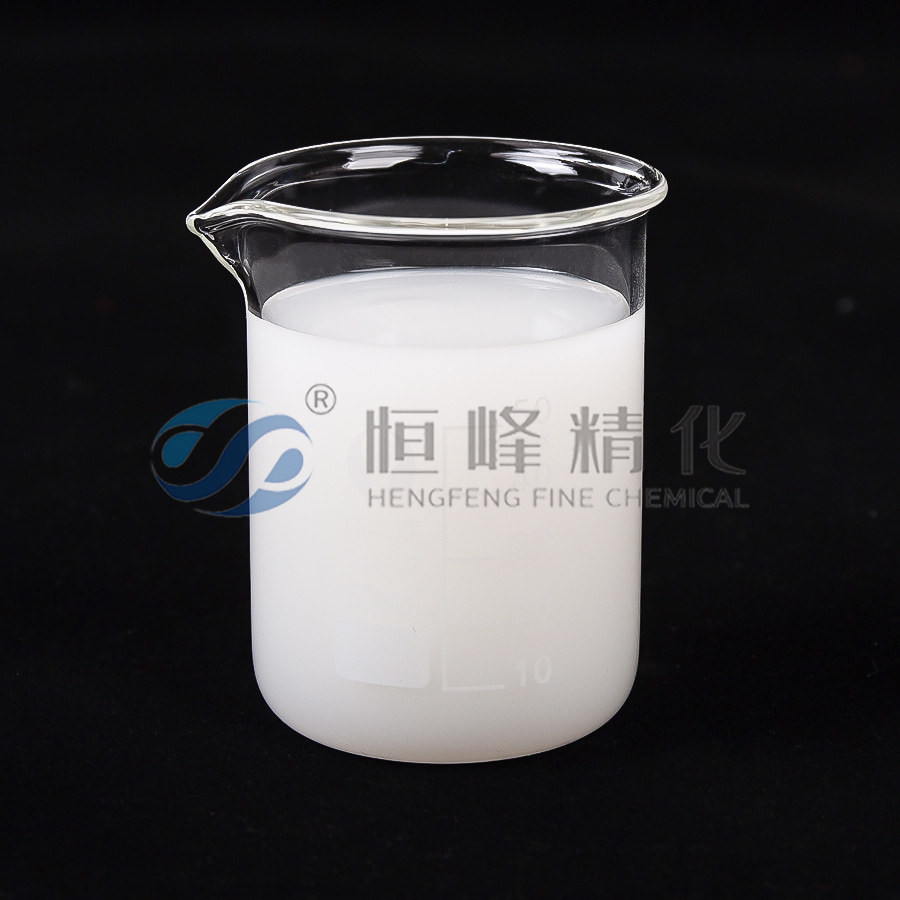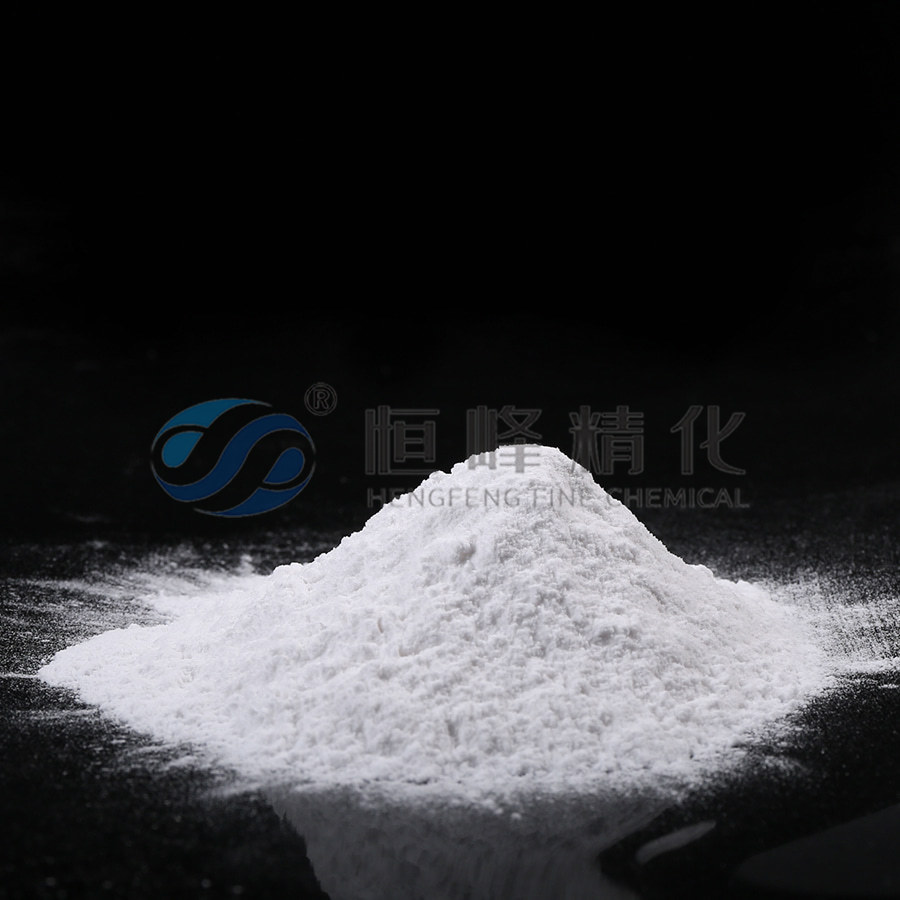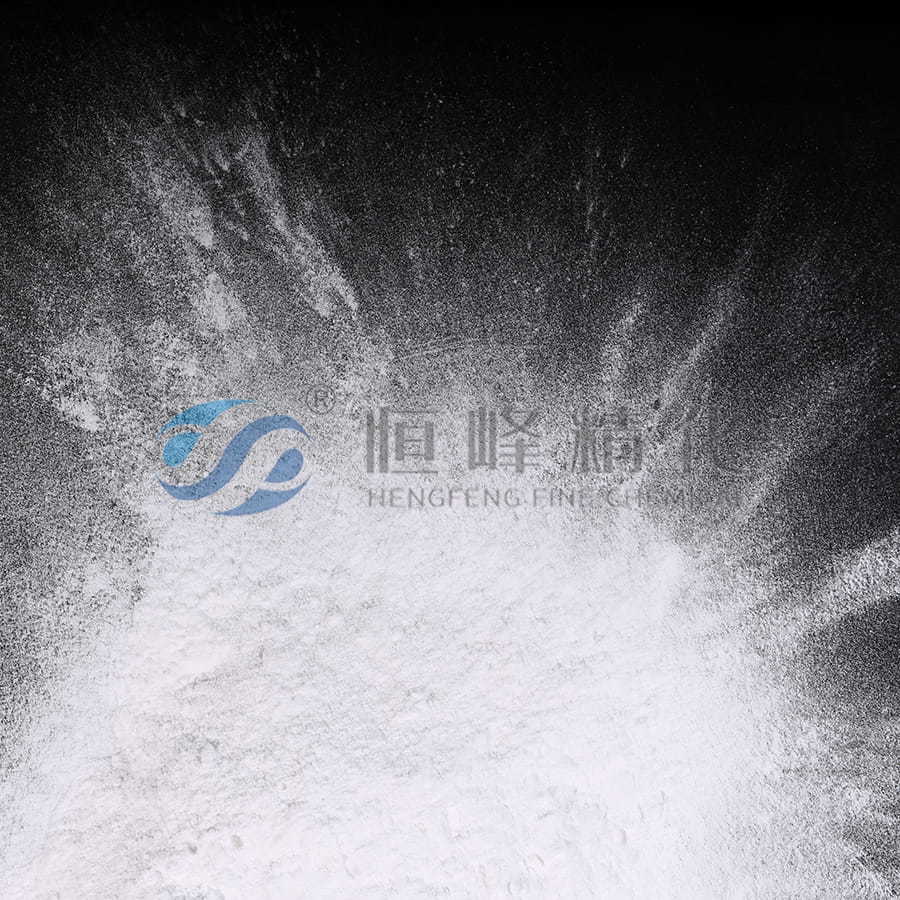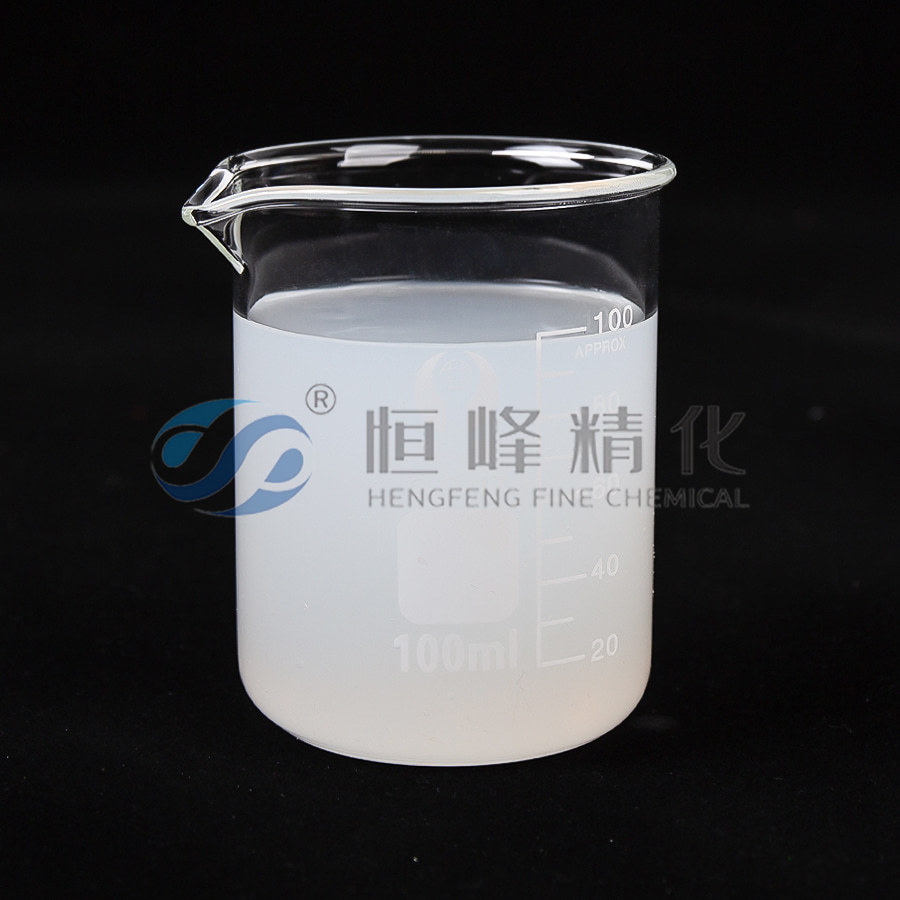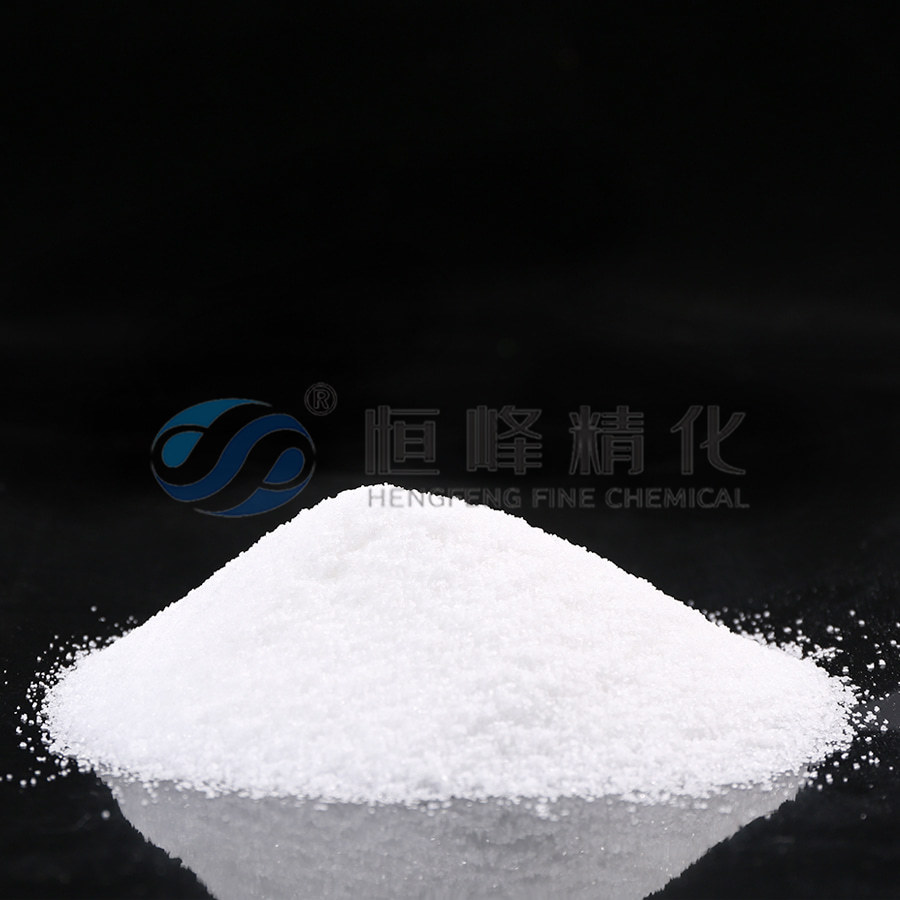Guide to Anionic Polyacrylamide Flocculants for Water Treatment
1.Introduction to Anionic Polyacrylamide (APAM) Flocculants
1.1. What are Anionic Polyacrylamide Flocculants?
Definition and Chemical Structure of APAM
Anionic Polyacrylamide (APAM) is a water-soluble polymer that is widely used in various industrial and environmental processes. It belongs to the class of polyacrylamide polymers, which are made by polymerizing acrylamide monomers. As the name "anionic" suggests, the polymer contains negatively charged (anionic) groups within its structure, which significantly influences its behavior in water treatment processes. The chemical structure of APAM consists of repeating units of acrylamide (C₃H₅NO), with a negative charge on the polymer backbone, usually introduced through the incorporation of carboxyl groups or other anionic components during the polymerization process.
APAM is characterized by a long chain-like molecular structure, with each polymer chain potentially comprising thousands of acrylamide monomers. The length and charge density of the polymer chains can vary depending on the specific application and manufacturing process, affecting the polymer’s performance.
Explanation of Flocculation and Its Importance in Water Treatment
Flocculation is the process by which fine particles in suspension aggregate or "flocculate" into larger clusters (called flocs), which can then be removed from the water by sedimentation, filtration, or flotation. This process is crucial in a wide range of water treatment applications, from drinking water purification to industrial wastewater management. The flocculation process is typically induced by adding flocculants like APAM, which help destabilize the colloidal particles in the water, allowing them to form larger aggregates that can be more easily removed.
In water treatment, flocculation plays an important role in clarifying water by removing suspended solids, organic matter, and other contaminants. Without effective flocculation, water treatment would be inefficient, resulting in poor water quality and potential health risks. The use of APAM as a flocculant has proven to be highly effective, thanks to its ability to bind particles together, forming stable and easily removable flocs. This makes APAM an indispensable tool in both potable water treatment and wastewater treatment processes.
2.Types of Flocculants
2.1. Brief Overview of Different Types of Flocculants (Cationic, Nonionic, Anionic)
Flocculants are broadly categorized based on the type of charge they carry. There are three main types:
Cationic Flocculants: These flocculants carry a positive charge and are effective at binding negatively charged particles. They are often used in situations where the suspended particles in the water are negatively charged or when positively charged species are required to neutralize the charge of certain pollutants.
Nonionic Flocculants: These do not carry any charge and are typically used in applications where the water contains particles with little or no charge. Nonionic flocculants are often chosen for their stability across a wide range of pH levels and salinity conditions.
Anionic Flocculants: Anionic flocculants, like APAM, carry a negative charge and are generally effective when treating waters with positively charged or neutral suspended particles. They are particularly useful in removing organic matter, such as oils and greases, and in situations where pH levels are slightly acidic or neutral.
2.2. Focus on Why Anionic Polyacrylamide is Preferred in Many Applications
Anionic Polyacrylamide is favored in many water treatment applications for a few key reasons:
Effective Particle Aggregation: Due to its negative charge, APAM is highly effective at promoting the aggregation of suspended particles that are either neutral or positively charged. This is especially important in treating water that contains colloidal particles like clays, organic matter, and metals.
Lower Dosage Requirements: APAM typically requires lower dosages compared to other types of flocculants like cationic polyacrylamide, making it a cost-effective choice for large-scale water treatment operations.
Environmental Compatibility: APAM is biodegradable, making it an environmentally friendly option. In many industries, there is a strong emphasis on reducing chemical pollution, and APAM offers a safer alternative that minimizes the environmental footprint.
Versatility: APAM can be used across a wide range of pH values and water salinities, making it suitable for diverse applications, from municipal drinking water purification to industrial wastewater management.
3.Common Names and Acronyms
3.1. Listing Common Names Like Polyacrylamide, APAM, etc.
Anionic Polyacrylamide (APAM) is known by various names and acronyms depending on its specific formulation, application, and sometimes the brand or supplier. Some of the most common names and terms associated with APAM include:
Polyacrylamide (PAM): This is the generic name for the polymer, and it may refer to both anionic and nonionic forms. "PAM" is often used when the specific charge type (anionic, cationic, or nonionic) is not important or has yet to be determined.
Anionic Polyacrylamide (APAM): This refers specifically to polyacrylamide that has been modified to carry a negative charge. APAM is the most commonly used type in water treatment due to its effectiveness at coagulating and flocculating suspended particles.
Flocculant: In water treatment applications, APAM is often referred to simply as a flocculant. This term describes its primary function — promoting the aggregation of fine particles into larger flocs.
PAM-Na: A shorthand notation sometimes used to indicate sodium-based (Na) anionic polyacrylamide formulations.
Acrylamide Polymer: This term refers to the polymeric structure formed by the polymerization of acrylamide molecules. It’s a more general description, which might not specify the charge type of the polymer.
These common names and acronyms are often used interchangeably in the industry, but it’s important to always check the specifications for charge type and molecular weight to ensure the flocculant is suitable for a particular application.
4. How do Anionic Polyacrylamide Flocculants Work
4.1. The Flocculation Process Explained
Flocculation, as mentioned earlier, is the process in which small, suspended particles in water are aggregated into larger clusters (flocs) that can be removed more easily. Anionic Polyacrylamide (APAM) works through a combination of two primary mechanisms: charge neutralization and bridging.
Charge Neutralization:
Many suspended particles in water carry a negative charge, making it difficult for them to aggregate. APAM’s anionic nature allows it to neutralize these charges, reducing the repulsive forces between particles. Once the repulsion is diminished, the particles can come together to form flocs.
Bridging:
APAM’s long, flexible polymer chains can bridge across multiple particles, connecting them together and forming larger aggregates. This is especially effective when the particles in the water are of varying sizes and shapes, as the polymer chains can link the particles into larger, more cohesive clusters.
Once the flocs are formed, they can easily be removed through processes like sedimentation or filtration, depending on the application.
4.2. Factors Affecting Flocculation
Flocculation is not a one-size-fits-all process, and several factors can impact its effectiveness. To optimize flocculation with APAM, it is crucial to consider the following factors:
pH Levels: The pH of the water significantly affects the performance of APAM. If the pH is too high or too low, the charge on the polymer chains and the particles in the water can change, reducing the flocculation efficiency. Typically, APAM works best in a neutral pH range (around 7), but this can vary depending on the specific formulation.
Temperature: The temperature of the water influences the viscosity and solubility of APAM. In colder water, the polymer may not dissolve as effectively, which could reduce its ability to flocculate particles. On the other hand, higher temperatures may cause the polymer to degrade more quickly, diminishing its effectiveness. Therefore, optimal temperature conditions should be maintained for best results.
Dosage Requirements and Optimization: The dosage of APAM is another critical factor. Too little flocculant may not form enough flocs to effectively remove particles, while too much may cause over-dosage issues like floc instability. Conducting jar testing (described later) is one way to determine the optimal dosage of APAM for a specific water quality.
5.Applications of Anionic Polyacrylamide Flocculants
5.1. Water Treatment
One of the primary uses of Anionic Polyacrylamide flocculants is in the treatment of water, specifically for clarifying drinking water and improving its quality. APAM helps to remove suspended solids and turbidity, ensuring the water is safe for consumption. In municipal water treatment plants, APAM is often used in coagulation-flocculation processes to enhance the removal of contaminants like sediments, algae, and other fine particulates.
Clarification of Drinking Water: In drinking water treatment, APAM is added after the addition of coagulants like aluminum sulfate. It helps to flocculate the tiny particles that coagulants initially destabilize, allowing them to form larger flocs that can be more easily removed by filtration or settling.
Removal of Suspended Solids and Turbidity: Suspended solids, organic matter, and fine particles contribute to the turbidity (cloudiness) of water. APAM’s ability to aggregate these particles is vital for achieving clear water that meets health and aesthetic standards.
5.2. Wastewater Treatment
APAM plays an essential role in the treatment of industrial and municipal wastewater. In these settings, the polymer helps to remove organic and inorganic pollutants, making the water suitable for discharge or further treatment. APAM is particularly effective in treating wastewater that contains oils, grease, and suspended solids.
Treatment of Industrial Wastewater: APAM is used in industries such as food processing, textile manufacturing, and paper production to treat wastewater containing organic materials, oils, and other contaminants. It ensures that suspended solids are efficiently removed, reducing the load on downstream treatment processes.
Sewage Treatment and Sludge Dewatering: In municipal sewage treatment plants, APAM helps in both primary and secondary treatment processes. It also aids in sludge dewatering, where the polymer helps to consolidate the sludge, making it easier to handle and dispose of.
5.3. Industrial Uses
APAM’s versatility extends beyond water treatment, finding applications in a variety of industries where particle aggregation and separation are critical.
Paper Manufacturing: APAM is used in paper mills to improve the retention of fine fibers during the paper-making process. It helps with the separation of fines and fillers, ensuring better paper quality and reducing waste.
Mining Industry: In mining, APAM is used for ore beneficiation processes, such as the clarification of tailings and the separation of minerals from waste. It is particularly valuable in flotation processes where the aggregation of valuable minerals is necessary.
Oil and Gas Industry: APAM is used in the oil and gas industry to enhance the removal of solid particles in drilling fluids, reduce viscosity, and improve water treatment processes associated with drilling operations.
6. Benefits of Using Anionic Polyacrylamide Flocculants
6.1. Improved Water Quality
The primary benefit of using Anionic Polyacrylamide (APAM) flocculants is the enhanced removal of pollutants from water. By effectively aggregating suspended solids and other contaminants, APAM helps to achieve superior water clarity. In municipal water treatment, this means that drinking water meets strict regulatory standards for turbidity and suspended solids, ensuring the safety and quality of water for consumption.
In wastewater treatment, APAM plays a crucial role in reducing the levels of pollutants, organic matter, and suspended solids. By improving the efficiency of flocculation, APAM helps to ensure that treated water can be safely discharged into the environment, or recycled for further use in industrial processes.
Meeting Regulatory Standards: APAM is often used to help water treatment facilities meet stringent local and international regulatory standards for water quality, such as the Safe Drinking Water Act or the Clean Water Act.
6.2. Cost-Effectiveness
Using APAM as a flocculant can be highly cost-effective, especially in large-scale water treatment systems. The efficiency of APAM in aggregating suspended particles means that lower dosages are typically required compared to other types of flocculants. This not only reduces the overall cost of chemicals used in the treatment process but also minimizes operational costs related to storage and handling.
Lower Dosage Requirements: APAM can be effective even at lower concentrations, meaning water treatment plants can achieve optimal flocculation without needing to apply large amounts of chemicals. This is particularly important in industrial wastewater treatment, where large volumes of water need to be treated, and the cost of chemicals can be significant.
Reduced Sludge Volume: APAM can help reduce the volume of sludge produced during the treatment process. This is an important consideration in wastewater treatment, as it reduces disposal costs and the environmental impact of sludge management.
6.3. Environmental Advantages
In addition to its cost benefits, APAM also offers environmental advantages, making it a sustainable choice in many industries. Being biodegradable, APAM has a reduced environmental footprint compared to other chemical flocculants that may persist in the environment.
Biodegradability: APAM’s biodegradability ensures that it does not accumulate in the environment after its use. Unlike non-biodegradable flocculants, which can cause long-term pollution, APAM breaks down into harmless by-products over time, minimizing its impact on ecosystems.
Reduced Environmental Impact: Since APAM typically requires lower dosages and produces less sludge, it contributes to a reduced environmental burden. Additionally, its use in reducing pollutants in wastewater and industrial discharges helps protect water sources and aquatic life from harmful contaminants.
7.Types of Anionic Polyacrylamide Products
Anionic Polyacrylamide (APAM) is available in several forms, each with its advantages and limitations depending on the application. The three main forms of APAM are powdered, emulsion, and liquid, each with unique preparation, storage, and application methods.
7.1. Powdered APAM
Advantages and Disadvantages:
Advantages: Powdered APAM is typically more concentrated than liquid or emulsion forms, meaning a smaller quantity is needed for a given application. It is also easy to store and transport.
Disadvantages: Powdered APAM can be difficult to dissolve in water, especially in cold conditions, and may require more careful handling to avoid clumping.
Preparation and Application:
Powdered APAM is usually mixed with water to create a stock solution. This solution must be stirred thoroughly to ensure complete dissolution of the polymer. Because it is more concentrated, careful control of the dosage is required during application to avoid over-dosing.
7.2. Emulsion APAM
Advantages and Disadvantages:
Advantages: Emulsion APAM is easier to handle than powdered APAM because it is already in a pre-dissolved form. It can be directly added to the water treatment system without requiring extensive mixing.
Disadvantages: Emulsion products are typically less concentrated than powdered APAM, so larger quantities may be required. The emulsion can also have a limited shelf life, particularly under high temperatures.
Preparation and Application:
Emulsion APAM is typically supplied as a pre-dissolved polymer in water, mixed with emulsifiers to stabilize the solution. It can be added directly to the water treatment system, but it is important to follow the manufacturer’s recommended storage conditions to maintain the quality of the product.
7.3. Liquid APAM
Advantages and Disadvantages:
Advantages: Liquid APAM is highly convenient to use because it is already in solution and ready for application. It is also easy to dilute, making it versatile for various dosage requirements.
Disadvantages: Like emulsion APAM, liquid APAM generally has a lower concentration compared to powdered APAM, requiring larger volumes to achieve the desired effect.
Preparation and Application:
Liquid APAM is delivered as a ready-to-use solution, and it can be dosed directly into the treatment process. However, users must ensure that the liquid is stored in appropriate conditions to avoid degradation over time
8.How to Choose the Right Anionic Polyacrylamide Flocculant
Selecting the right APAM flocculant for a particular application requires an understanding of the water quality and treatment needs. Several steps can help ensure that the optimal flocculant and dosage are chosen for the task at hand.
8.1. Water Quality Analysis
Before selecting an APAM flocculant, a comprehensive water quality analysis is essential. Understanding the characteristics of the water being treated — such as its turbidity, pH, temperature, and suspended solid content — will help determine the best flocculant type and dosage.
Key Parameters to Consider: Important factors to consider include water pH, suspended solid concentration, turbidity, organic content, and the presence of specific contaminants like oils or heavy metals.
8.2. Jar Testing
Jar testing is a standard procedure used to determine the optimal dosage and flocculant type for a specific water treatment application. In jar testing, small samples of water are treated with varying amounts of flocculant, and the results are observed to identify the most effective dosage for the given water quality.
Determining Optimal Dosage: By adjusting the dosage and observing the formation of flocs, operators can determine the most effective amount of APAM needed for efficient flocculation.
8.3. Vendor Selection
Choosing the right supplier for APAM is an important part of the process. Factors to consider include product quality, the supplier’s ability to provide technical support, and the supplier’s reputation for delivering consistent and high-quality products.
Factors to Consider: Look for suppliers who offer technical support and provide detailed product specifications, including molecular weight, charge density, and recommended usage. Quality control measures should also be emphasized to ensure the consistency and reliability of the product.
9. Safety and Handling
9.1. Safety Precautions
While Anionic Polyacrylamide (APAM) is generally considered safe to use in water treatment applications, proper handling and storage precautions are essential to ensure safety for workers and to maintain the effectiveness of the product.
Storage Guidelines:
Storage Conditions: APAM should be stored in a cool, dry place, away from direct sunlight and moisture. For powdered forms, ensure that bags or containers are tightly sealed to prevent moisture absorption, which could affect solubility. Liquid or emulsion forms should also be stored in sealed containers to avoid contamination and degradation.
Spill Management:
Spill Containment: In the event of a spill, the affected area should be immediately contained. For powdered APAM, sweeping the material into a dustpan and disposing of it properly is crucial to avoid inhalation hazards. For liquid or emulsion forms, absorbent materials (such as sand or absorbent pads) should be used to contain and absorb the spill.
Disposal: Once contained, spills should be disposed of in accordance with local environmental regulations. Ensure that any waste is disposed of in a way that does not pose a risk to water sources or wildlife.
10.Troubleshooting Common Issues
10.1. Poor Floc Formation
Possible Causes:
Incorrect Dosage: If the flocculant dosage is too low or too high, it can result in poor floc formation. Inadequate flocculation typically occurs when the particles in the water are not effectively aggregated, leaving the water cloudy or filled with suspended solids.
Incorrect pH: The pH of the water plays a key role in flocculation. If the pH is too acidic or alkaline, the charges on the particles and the APAM may not align correctly, inhibiting the aggregation process.
Solutions:
Conduct jar testing to determine the optimal dosage.
Adjust the water pH to the ideal range (usually near neutral, around pH 7) to optimize flocculation.
10.2. Over-Dosage
Possible Causes:
Excessive Flocculant: Using too much APAM can result in the formation of overly dense or sticky flocs, which may become difficult to separate from the water. This can lead to inefficient treatment, as the flocs may not settle properly or may cause other downstream issues in the treatment process.
Solutions:
Reduce the dosage: Gradually reduce the flocculant dose until optimal floc formation is achieved.
Monitor Settling Time: Ensure that the flocs are settling at the correct rate. If they are not settling efficiently, lower the dosage and check the floc size.
10.3. pH Imbalance
Possible Causes:
pH Fluctuations: Significant changes in water pH can alter the charge distribution on both the polymer and the suspended particles. If the pH is outside the ideal range for APAM (generally around neutral), it can reduce the effectiveness of flocculation.
Solutions:
pH Adjustment: Use appropriate acid or alkaline substances to adjust the pH of the water to the optimal range for APAM application. This should be done gradually and in small increments to avoid drastic changes.
Re-test: After pH adjustments, conduct jar testing again to ensure that the flocculation process is working optimally.
Conclusion
Anionic Polyacrylamide (APAM) flocculants offer significant advantages in a wide range of water treatment and industrial applications. From improving the clarity of drinking water to aiding in wastewater treatment and sludge dewatering, APAM plays a vital role in enhancing the effectiveness of flocculation processes. Its ability to aggregate suspended particles and remove contaminants efficiently makes it a valuable tool in both municipal and industrial settings.
The benefits of using APAM are clear: improved water quality, cost-effectiveness, and environmental sustainability. Additionally, APAM’s versatility, along with its lower dosage requirements, ensures that it can be tailored to meet the specific needs of various applications, including drinking water purification, industrial wastewater treatment, and more.
When selecting the right type of APAM, it is important to consider the specific characteristics of the water being treated, as well as factors like pH, temperature, and dosage optimization. Proper handling and storage, along with environmental considerations, are also key to ensuring safe and effective use.
By choosing the right APAM product, conducting proper testing, and following safety guidelines, water treatment operators can optimize their flocculation processes and achieve superior water quality while minimizing costs and environmental impact.


 English
English Español
Español عربى
عربى Русский
Русский Tiếng Việt
Tiếng Việt





